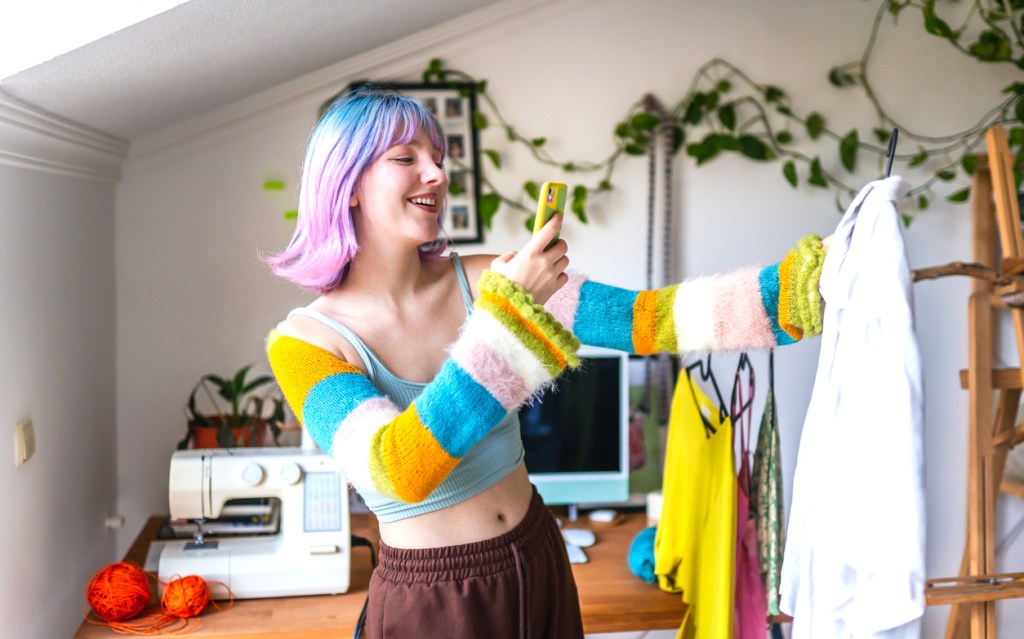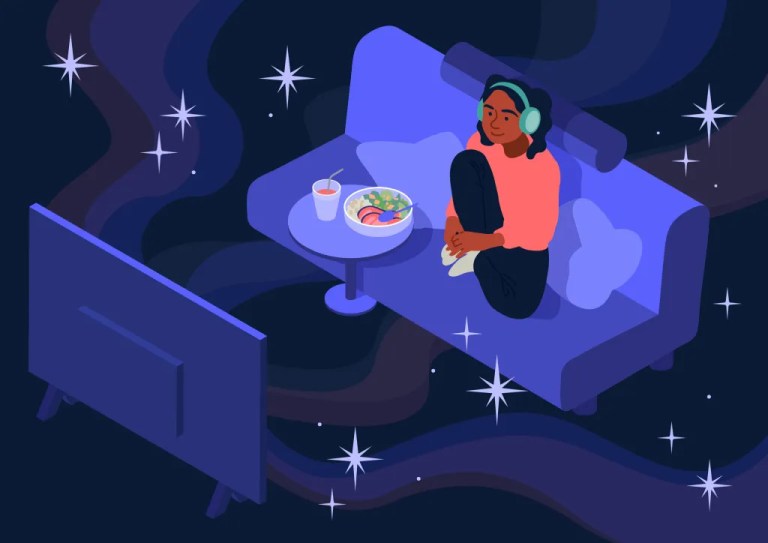In a positive turn of events, it’s getting less cool for content creators to share videos of shopping hauls and more cool to encourage their followers to save money and practice sustainability. The shift is an offshoot of the de-influencing movement, and proponents are calling it “underconsumption core.”
In one recent viral video, a young woman shows off the worn-in sneakers she’s sported every day for the past two years. In another, a TikTok user shares that some of her walls are still blank because she’s taking her time and buying decor secondhand rather than “running to fill the space with whatever is trendy at Target.”
The trend is a response to some of the challenging issues many young people feel burdened by, like student debt, inflation, and climate change, as well as the unrealistic expectations that social media often sets.
@dainty.nugs Some underconsumption tips ive been trying to follow this year, i am actually spending WAY less already than last year on material items and way more on experiences, traveling, hobbies and spending time with loved ones! #underconsumption #deinfluencing #underconsumptioncore
♬ original sound – speedz!
“I think it’s really refreshing to see this new takeover of more relatable content,” 24-year-old freelance graphic designer Meghan Pexton told The New York Times, adding: “We need to make a shift in who we’re following. We are in control of our algorithm.”
This kind of response to overt consumerism isn’t exactly new, of course. The Buy Nothing movement, in which local groups form on Facebook to swap everything from clothing to household products and food, launched over a decade ago. And this writer recalls a friend back in college swearing off buying anything new for an entire year (though cannot report on the success of said friend’s endeavor).
RELATED: How Do You Set Kids Up for Economic Upward Mobility? Parental Employment Is a Key Factor
Per Brett House, an economics professor at Columbia University’s business school, whenever major economic downturns occur, a return to minimalism tends to follow. He cited the “new intensity around artisan goods and experiences” after the 2008 financial crisis, telling the Times: “There’s little new here beyond the names we’re giving macroeconomically induced changes in consumer behavior and the pace at which we’re casting one meme off for the next.”
Still, it’s encouraging that Gen Z and millennials are embracing the desire to shop more sustainably. Per a 2022 World Economic Forum report, the former generation is said to be more concerned with the issue than any before it. Yet that same year, 72% reported shopping for fast fashion, a report from online resale platform ThredUp found.
@shelbizleee ♬ Don’t Know Why – Norah Jones
The dichotomy speaks to the importance of underconsumption core taking off, as so many young people turn to social media for lifestyle inspiration.
“I’ve been really excited to see this trending lately, because it’s a good approach to showing that overconsumption isn’t the norm for most people,” Diana Wiebe, a 30-year-old communications manager and content creator who critiques influencer culture, told the Times, adding: “It’s almost like breaking people out of the trance.”
Writing for The Conversation, Omar H. Fares and Seung Hwan (Mark) Lee of Toronto Metropolitan University recommend focusing on two areas when it comes to being a healthier consumer: balancing frugality with quality of life, and improving financial literacy. Read their advice.











